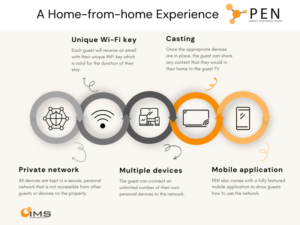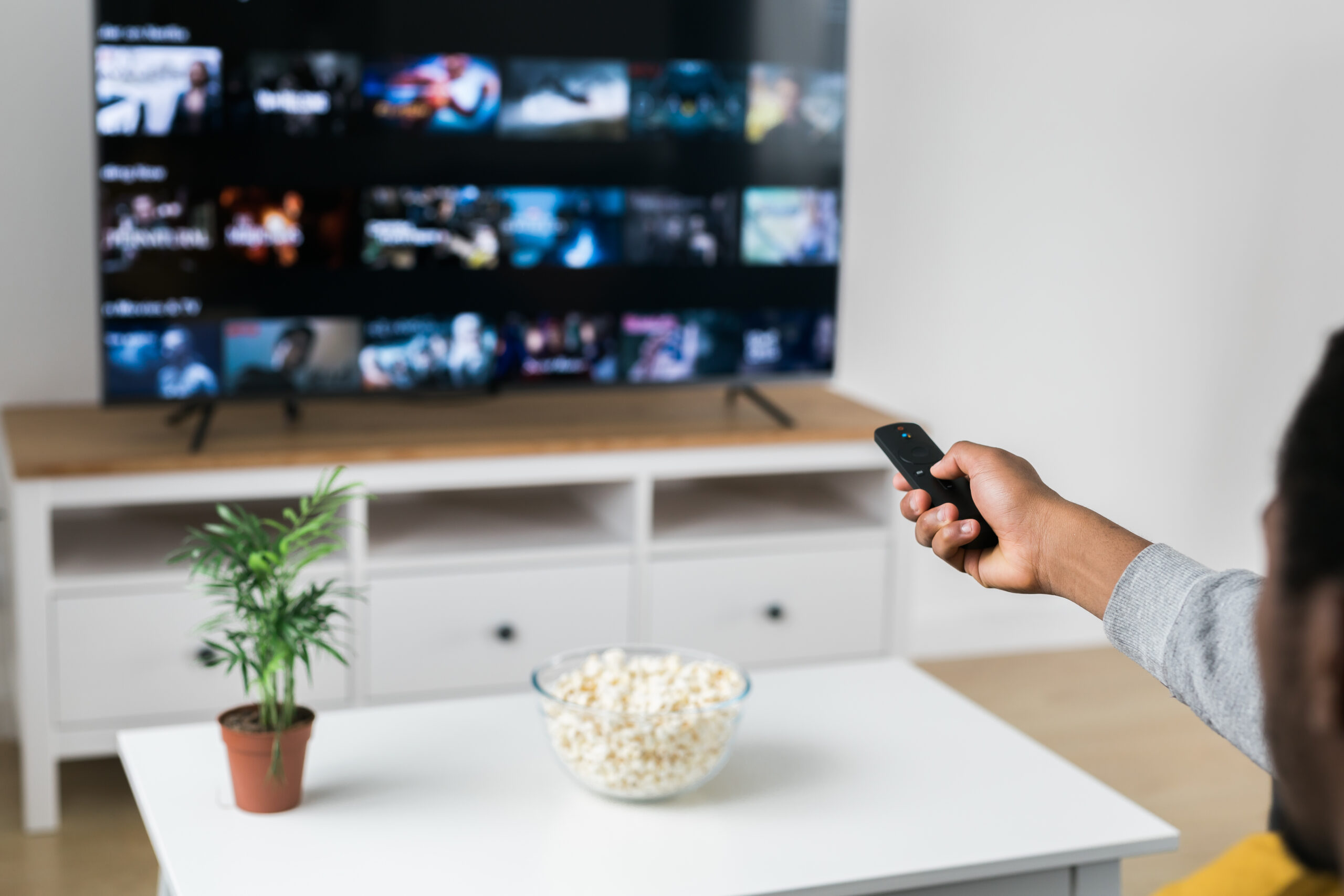Co-Founder and Director, Leo Colgan
When IMS first began installing broadband into buildings (2003), it was long before the world of Wi-Fi and we were catering for the few who had laptops that could plug into sockets on the wall. Back then, a 64kb leased line was a massive investment costing around £10,000 per annum! How far we have come from those days to a reality where every person in a building, young or old, has a device that they want to connect to the internet.
When we were making the transition from wired networks to wireless networks for our hospitality clients, they were faced with the double whammy of having to upgrade their internet connections as well to cater for the increased usage. Symmetrical broadband connections were proving an expensive necessity and the industry had both early and not so early adopters.
Fast forward to 2022 and what the guest expects.. the guest wants to continue doing what they were doing before they got there! Understanding this is half the battle; implementing solutions that cater for this is the other half.
There are basics that are non-negotiable now for the hotelier when ensuring their property is prepared for the modern hotel guest; uncontended symmetrical fibre broadband being one. However, the broadband connection into a building can only be as good as the Wi-Fi network that distributes this broadband to the Wi-Fi hungry devices, of which there are many.
The irony of a Wi-Fi network is that it is far from wireless! It is made up of switches and Wi-Fi access points that are peppered throughout a hotel’s complex. Not only in bedrooms, but in all common areas, meeting rooms, event spaces etc. This requires proper design from wireless network experts, not the IT experts who only offer Wi-Fi as an add-on service.
Once you get these elements right, then it is down to what the devices can do on your Wi-Fi network, and this is where it is essential to put yourself in the shoes of the guest. The modern guest is likely to bring, on average, 3 devices each to your property. They bring the devices that have the latest and greatest technology; therefore, the onus is on us to provide a conduit for them to continue using this technology.
Take for example the TV services offered by hotel chains tethered by archaic brand standards. Who wants to navigate 20 menus just to watch TV? Who wants to jump through the hoops of trying to connect a device, which is hit and miss to say the least? Guests don’t want countless menus on a TV, they want to use the TV screen to cast the episode of the show they were already watching on their preferred streaming platform.
I’m always intrigued to see what my teenage boys do when we’re on a staycation. They connect their devices and if they’re unable to cast that content, they stick to their iPhones or iPads and don’t bother with the TV. When they come with me to stay in a property with the IMS solution, we cast off one device and watch something together. Powerful. No longer are the kids sitting in the corners on their devices, (which drives all parents crazy!) we are now doing something together. This is why GMs love the casting solution, it helps guests to feel at home.
One hotel operator that we have provided managed Wi-Fi services for years, decided on our advice to roll out casting as standard in all their new openings post 2019. This operator is very driven in achieving a booking.com rating above 9. An interesting picture began to develop – all the properties that have casting are scoring well above 9, while the properties without casting are scoring marginally lower. Given this trend, the operator has requested IMS to deploy casting in all remaining properties throughout Europe. Why is this?
The IMS Personal Entertainment Network
The modern guest wants to Bring Your Own Device (BYOD). It is the job of the hotel to make it as easy as possible for these devices to connect to the Wi-Fi and connect to the TV. Outside of phones & tablets – devices like gaming consoles, voice assistants or other smart-enabled devices are easily onboarded to the network.
The IMS PEN solution that has been rolled out in hotels, aparthotels, serviced apartments and other MDU developments throughout Ireland, the UK and Europe makes this very easy to do.
Devices connected to the network can be used anywhere in the property. Each room’s private vlan network is not limited to your room but using the shared infrastructure is accessible throughout the property.

Hotel operators cannot be expected to keep up with the latest developments in Android and Apple devices, so make sure that your Wi-Fi network can! In 2018, a study predicted that by 2022, 82% of all internet traffic would be video; that figure was reached in 2021. These are the guests of the present and the future; make sure your network is ready for them. Future trends like Web3 likely will change how the younger generations consume content in the future in a hotel environment. Technologies like NFTs are becoming common – early adopter hotels issue room keys by NFT, for example, or provide VR and AR experience to deliver a home experience to guests.
Read Leo’s LinkedIn article here.
If you’re looking to enhance your guests’ experience, get in touch with us.




